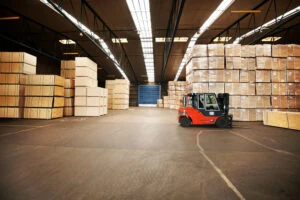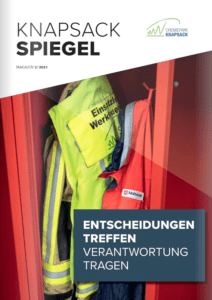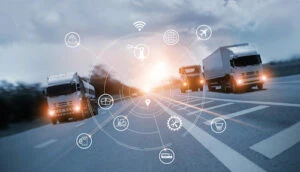Find out why IoT will revolutionize the transportation of perishable food products. Gain insights that will change your logistics processes and redefine the quality assurance of your products.
IoT in transportation
The logistics of perishable goods face unique challenges. IoT Solutions have the potential to optimize the efficiency of transporting these delicate goods. In this article, we look at the challenges, present four specific solutions and summarize the most important key messages.

Challenges in the transportation of perishable goods
Transportation of perishable goods such as fruit, vegetables, meat and dairy products requires special handling. A controlled environment to maintain quality from origin to destination is essential. This is why the challenges posed by the logistics of such products are varied and complex.
Fluctuations in temperature
One of the biggest challenges when transporting perishable foodstuffs is keeping the temperature at a constant level. Temperature fluctuations can be caused by various factors, such as changing weather conditions, inadequate refrigeration systems or the opening of the loading doors when loading and unloading the transport vehicle.
Legal framework
The transportation of perishable goods is subject to strict legal regulations, which can vary from country to country. However, compliance with these regulations is essential to ensure food safety and avoid penalties from various authorities.
Technical failures
Transport vehicles for perishable goods are equipped with complex technology. These are susceptible to technical faults. If the refrigeration system fails due to a lack of maintenance or a technical defect, this has catastrophic consequences for the freight.
Logistical delays
Traffic jams, road closures and other unforeseen events can lead to delays, which are particularly critical for perishable goods. Every hour of delay can affect the quality of the products and thus reduce their value
Transparency in the supply chain
A lack of visibility in the supply chain can lead to inefficiency. The reason for this is that manufacturers, carriers or recipients are often unable to track where the products are and what condition they are in in real time without the use of IoT .
Consequence of inefficiency in the transportation of perishable goods
The effects of inefficiency in the logistics of perishable goods are far-reaching and can affect a company's entire supply chain. We outline exactly what these are below.
Economic losses
Inefficiency can lead to a loss of product quality, which directly affects the saleability of the products. This results in financial losses for farmers, logistics companies and retailers. Defective goods cannot be sold, which then leads to empty shelves in supermarkets, for example, and indirectly to lower sales.
Health risks
The consumption of products that have been exposed to inadequate handling during transportation can lead to health problems for consumers. The consequences are the threat of lawsuits, product recalls and loss of image.

Environmental impact
The destruction of food due to an inefficient supply chain contributes to the waste of resources such as water and energy. These are essential in production and therefore increase the burden on the environment.
Reputational risk
Companies that are unable to ensure the quality of their perishable goods risk losing their reputation and the trust of their customers. This point is likely to be one of the most important for most companies, as in the worst case scenario they could even face insolvency.
IoT Solutions for transporting perishable goods for greater efficiency
1. monitoring and tracking in real time
Modern IoT solutions for transportation offer a comprehensive range of monitoring options. Barcodes and GPS sensors work seamlessly together to track a shipment along its route. Real-time data collection enables complete traceability and quality control. With the use of cloud-based platforms, everyone involved can have access to this information.
This results in a transparent and responsive supply chain. By using intelligent analysis systems, patterns can be identified in order to further optimize processes. For example, bottlenecks can be quickly identified and eliminated.
2. control of temperature and humidity
As already mentioned in the challenges, monitoring storage conditions is essential. IoT-However, sensors offer far more than just simple temperature and humidity measurements. They enable dynamic adjustment of the ambient conditions in refrigerated containers or warehouses.
Intelligent systems can react to changes and adapt cooling systems, for example, in order to optimize energy consumption. In addition, the collected data can be used to analyze the quality of products over time and thus continuously improve storage and transport methods.
3. predictive maintenance for transport vehicles
Predictive maintenance is an area that is being revolutionized for IoT transport. Sensors continuously record the condition of critical vehicle components and use algorithms to predict the optimum time for maintenance. This not only minimizes unexpected breakdowns and delays, but also helps to increase vehicle safety.
In the long term, this can save costs and extend the service life of the vehicles. In addition, analyzing vehicle data provides insights into usage patterns and enables more efficient fleet management.
4. optimized route planning and traffic analysis
IoT in transportation enables route planning to be taken to a new level. By connecting with real-time traffic information and weather data, routes can be dynamically adjusted to minimize delays. GPS sensors and mobile apps enable interactive communication with drivers and ensure that they always choose the optimal routes.
In addition, data on driving behavior and times can be used to further fine-tune route planning in order to reduce fuel consumption and emissions and at the same time increase punctuality.

Conclusion: use IoT to transport perishable foodstuffs
As a decision maker in an industry where you transport perishable food, it's time to take advantage of IoT technology. The challenges companies face in transportation can be overcome by implementing innovative IoT solutions. We therefore encourage you to take a step forward. Invest in IoT transportation to gain improved visibility of your supply chain, ensure the integrity of your products and exceed safety standards.
By using IoT in transportation, you contribute to a sustainable and efficient global food supply chain. Ultimately, it's all about satisfied customers who value fresh, safe and guaranteed delivery of perishable goods.




